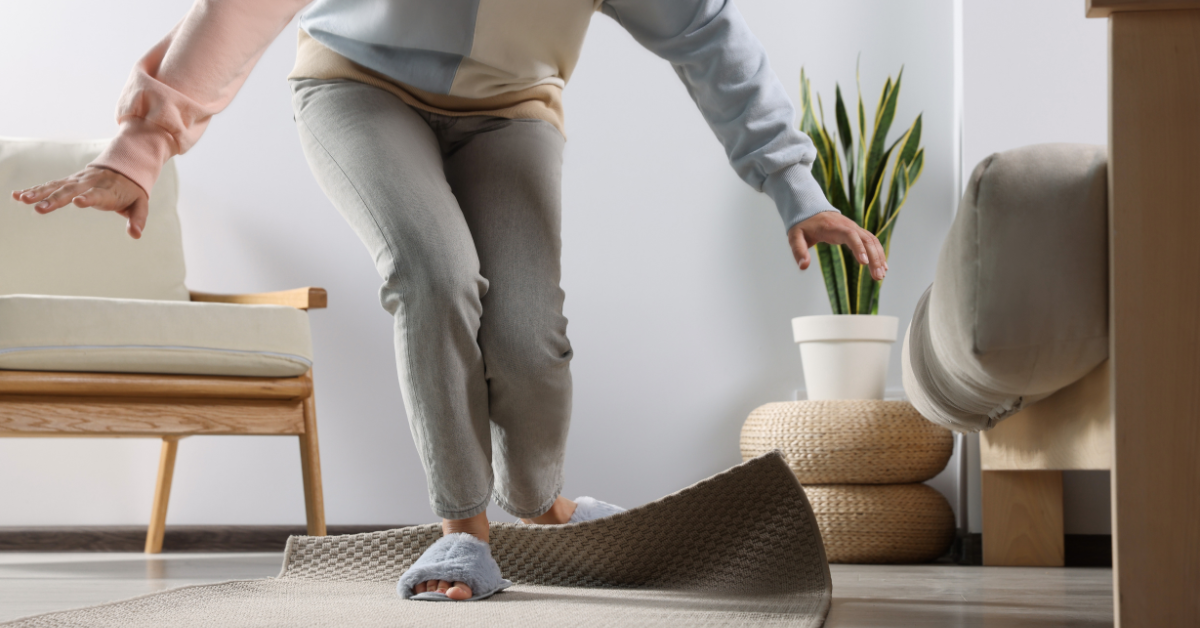Your home is your sanctuary—a place of comfort, familiarity, and safety. But what if the very environment you trust is quietly putting you or a loved one at risk? For older adults and people living with mobility challenges, the smallest oversight can have big consequences. A slippery floor or dim hallway might seem minor, but they account for thousands of preventable injuries each year.
At Liv Home Pros, we believe that peace of mind begins with prevention. That’s why we’re shedding light on the most commonly overlooked home hazards and, more importantly, how to fix them.
1. Throw Rugs & Loose Carpets
Why it’s risky: These often decorative items can curl up at the corners or slide on smooth surfaces, creating serious tripping hazards.
What you can do: Remove them entirely or secure them with non-slip backings. Better yet, opt for low-pile carpeting or textured flooring that reduces slipping without sacrificing style.
2. Poor Lighting in Hallways and Stairs
Why it’s risky: Dim lighting can make it harder to notice steps, thresholds, or even dropped objects, especially during nighttime bathroom trips.
What you can do: Install brighter LED bulbs, add nightlights in hallways and bathrooms, or consider motion-sensor lighting that turns on automatically as you move through the space.
3. Cluttered Pathways & Tight Furniture Layouts
Why it’s risky: Narrow walkways can be difficult to navigate with canes, walkers, or mobility aids. Clutter creates unnecessary obstacles and fall potential.
What you can do: Reorganize rooms to allow wide, clear walking paths. Make sure cords, baskets, or low furniture are out of the way. A few simple layout adjustments can dramatically improve safety and independence.
4. Lack of Grab Bars in Critical Areas
Why it’s risky: Slips and falls are most likely in areas where balance is compromised—like when getting in and out of the shower, off the toilet, or out of bed.
What you can do: Install grab bars in bathrooms, near beds, and by doorways. These aren’t just for emergencies; they offer day-to-day stability and confidence.
5. Slippery Bathroom Floors
Why it’s risky: Wet tiles, steam, and soap residue can all contribute to slick surfaces.
What you can do: Use textured, non-slip mats inside and outside the shower. Consider anti-slip coatings or replacing flooring with slip-resistant materials specifically designed for wet environments.
6. Unsecured Cords and Wires
Why it’s risky: Electrical cords can become tripping hazards when left loose across floors or tucked behind furniture where they’re not easily seen.
What you can do: Use cord organizers or covers that keep wires secured and flush with walls. Tape them down when necessary or reroute them entirely to keep high-traffic areas clear.
7. Inaccessible Emergency Numbers
Why it’s risky: During a fall or medical emergency, time is of the essence. Searching for a phone number or trying to remember who to call can delay crucial help.
What you can do: Post a large-print emergency contact list in a visible location (like on the fridge or next to the phone). Set up voice-activated devices like Alexa or Google Home that can call for help when needed.
Peace of Mind Begins with Prevention
Many of the hazards listed here are easily fixable—often in under an hour. But left unaddressed, they can pose real dangers. The good news? A safer home doesn’t require a full renovation. It simply requires a thoughtful approach.
At Liv Home Pros, we specialize in transforming houses into safe, functional, and beautiful homes where people can age in place with dignity. If you’re unsure where to start, we offer personalized safety consultations to help you identify hidden risks and create a plan that works for your space and your life.
Let’s work together to make your home the safe haven it was meant to be.
Call Us: [585-203-9200]

